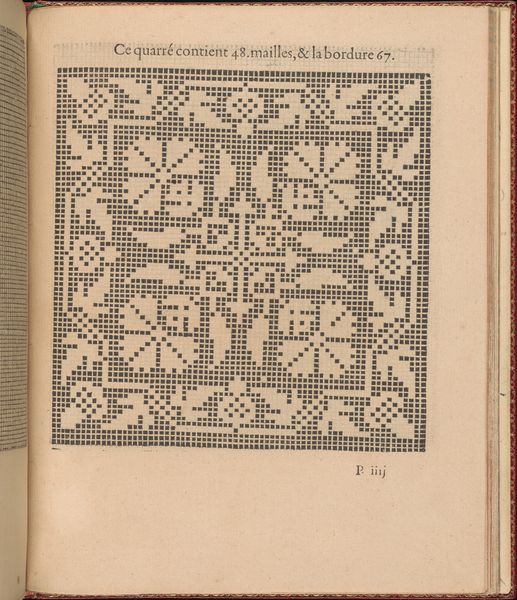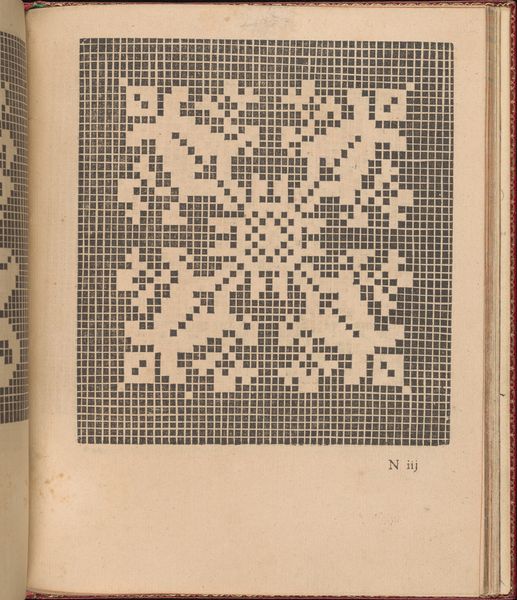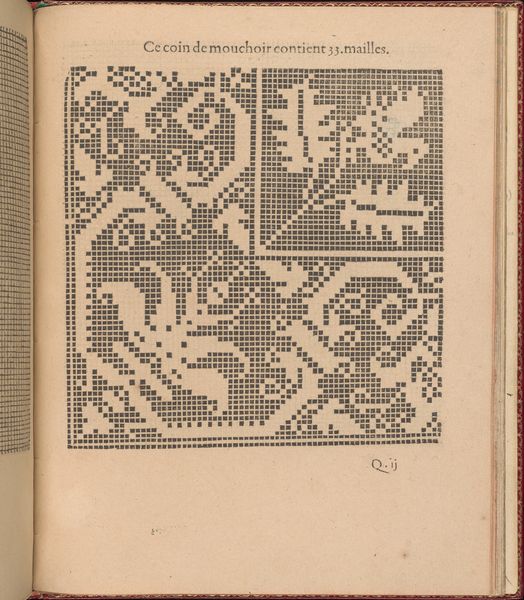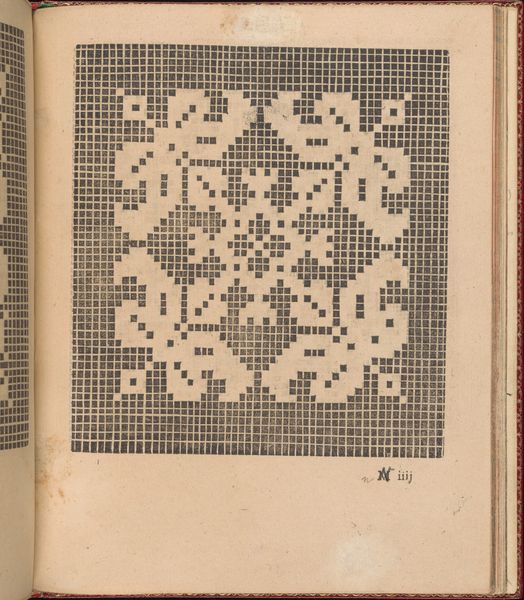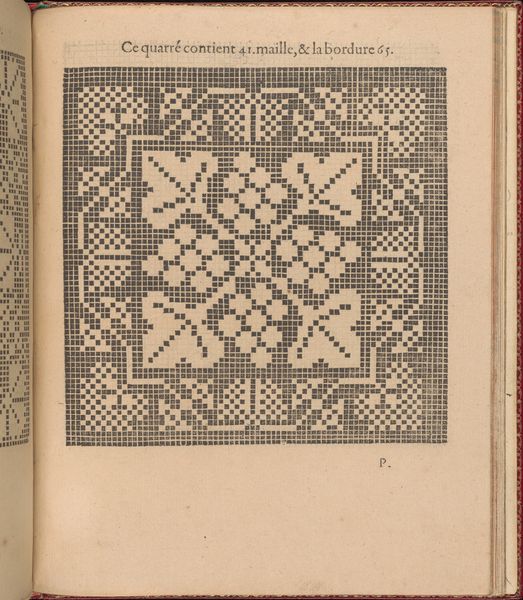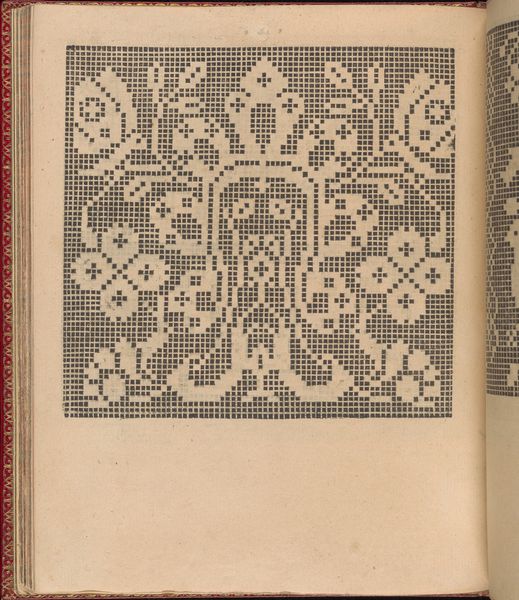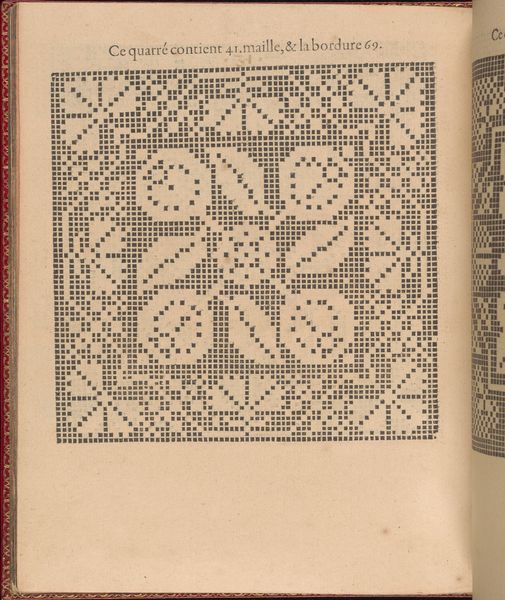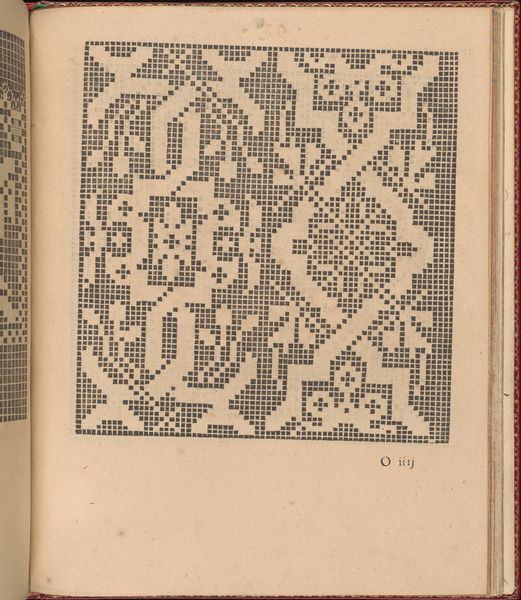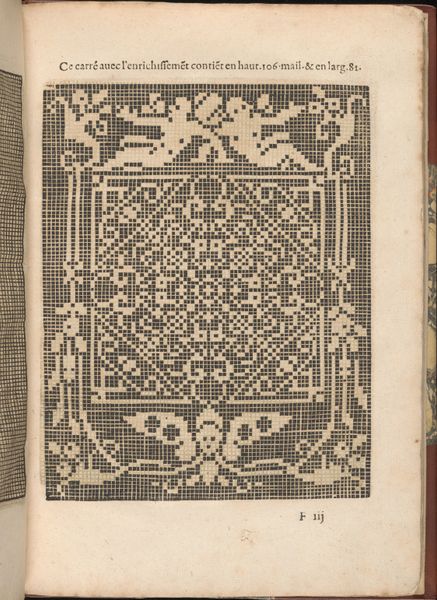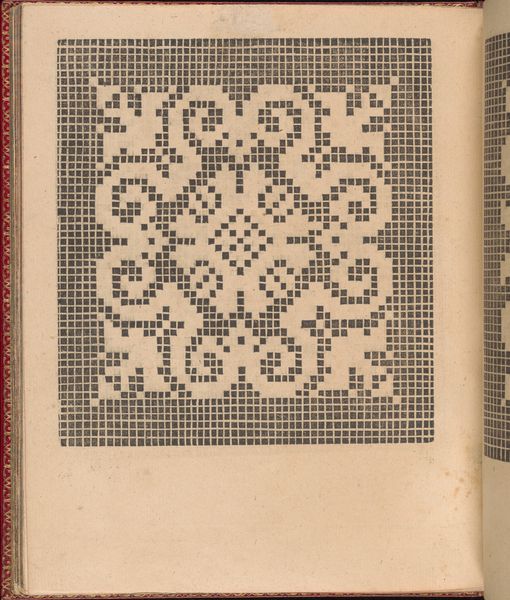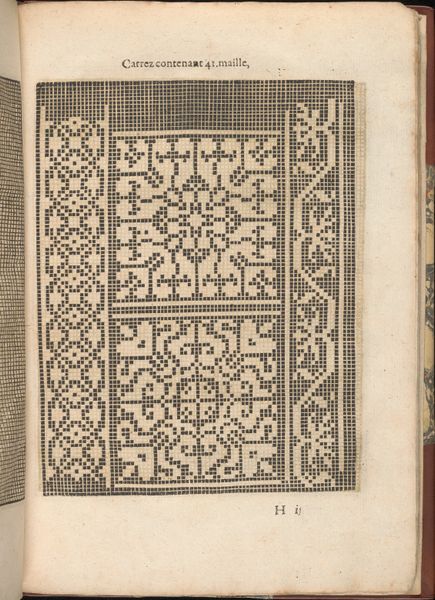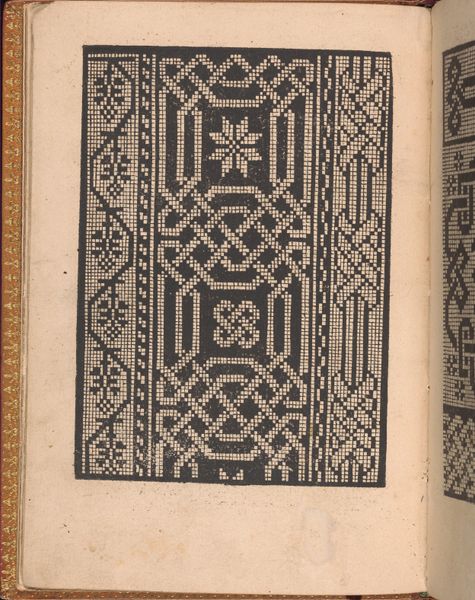
Les Singuliers et Nouveaux Portraicts... page 43 (recto) 1588
0:00
0:00
drawing, print, engraving
#
drawing
# print
#
pattern
#
11_renaissance
#
geometric
#
engraving
Dimensions: Overall: 8 1/16 x 6 5/16 in. (20.5 x 16 cm)
Copyright: Public Domain
Curator: Ah, I'm so excited to talk about this page! This is a page from "Les Singuliers et Nouveaux Portraicts…," specifically page 43, made in 1588 by Federico de Vinciolo. It's currently housed here at the Met. It’s an engraving, and what’s depicted are two quite lovely patterns. Editor: My first thought is actually video games! It has such a retro, 8-bit pixel aesthetic. What are we even looking at here? Fabric designs? Curator: Precisely! Vinciolo was, among other things, a pattern designer. This book was basically a sourcebook for embroidery and lacemaking. You see these grids; it's meant as instruction. These designs could then be translated into woven or stitched works. Each square would have represented a single stitch or the crossing of threads. Editor: So, less about high art and more about applied skill? It's amazing to see how these practical crafts were documented and disseminated back then, making it accessible to artisans across different locations. Do you think this was particularly significant as labor? Curator: Absolutely! It’s all about the transmission of knowledge and skills. Imagine the collective effort, all the hands that created works derived from this one page! Editor: This feels radical even now; what it could have implied back then is exciting to think about. It wasn’t merely the visual pattern that was of relevance. But the materials chosen, threads of silk or linen and how that choice reflected access and wealth. The pattern dictates the movement, the hand working, the creation in that moment of something both functional and aesthetic. Curator: It's also quite democratic! It puts design into the hands of the maker. There is a beautiful sort of back and forth as each piece emerges uniquely. Every hand that recreates a piece like this tells the story just a little bit differently, do you agree? Editor: Without question! Seeing something that reduces art to its most fundamental material components, is profoundly… human. The labor is right there. Thanks to this page, patterns survive beyond their tangible realization to inspire continued iterations, just as relevant today as when the design book was first conceived!
Comments
No comments
Be the first to comment and join the conversation on the ultimate creative platform.
